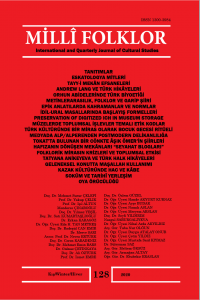Fan HONG and Liu LI (eds.), Indigenous Sports History and Culture in Asia, New York: Routledge, 2021
The book is overwhelmingly discussing martial arts culture and its popularity within the global context. It reviews Japan’s martial arts and how it expanded globally. It further reviews the evolution of Korean martial arts and how sports between North Korea and South Korea are used as diplomacy. Furthermore, a comparative study between China’s and Japan’s traditional sports narrates the modern transformation of the art. Regret about the book is an omission on the expansion of Asian martial arts in developing countries, for example, Sub-Saharan Africa and South America, because it would have given insight into the positive evolvement and challenges of martial arts in developing countries. Although the chapter about Israel’s combat discipline by using Asian martial arts from 1891 gives an interesting twist to the book, we would rather have preferred insight into the implementation of martial arts in developing countries. Despite the book’s above-mentioned shortcomings, the language is accessible, and the book is structured and coherent.
Anahtar Kelimeler:
Yerli Spor Tarihi, asya kültürü, yerli topluluklar
Indigenous Sports History and Culture in Asia
The book is overwhelmingly discussing martial arts culture and its popularity within the global context. It reviews Japan’s martial arts and how it expanded globally. It further reviews the evolution of Korean martial arts and how sports between North Korea and South Korea are used as diplomacy. Furthermore, a comparative study between China’s and Japan’s traditional sports narrates the modern transformation of the art. Regret about the book is an omission on the expansion of Asian martial arts in developing countries, for example, Sub-Saharan Africa and South America, because it would have given insight into the positive evolvement and challenges of martial arts in developing countries. Although the chapter about Israel’s combat discipline by using Asian martial arts from 1891 gives an interesting twist to the book, we would rather have preferred insight into the implementation of martial arts in developing countries. Despite the book’s above-mentioned shortcomings, the language is accessible, and the book is structured and coherent.
Keywords:
Yerli Spor Tarihi, asya kültürü, yerli topluluklar,
- ISSN: 1300-3984
- Yayın Aralığı: Yılda 4 Sayı
- Başlangıç: 1989
- Yayıncı: Geleneksel Yayıncılık
Sayıdaki Diğer Makaleler
Doğumunun 80. Yılında Biyografisi ve Eserleriyle Hocaların Hocası Prof. Dr. Umay Türkeş Günay
Süleyman AKSU, Elza ALIŞOVA DEMİRDAĞ
Dinî Nitelikli Giresun Efsanelerinde Anlatının Sözdizimi
Türk Destanlarında Kurdun Değersel Dönüşümü
Ahmet Özgür GÜVENÇ, Muhammet Nuri CEYLAN
Atasözleri Bağlamında Türk Kültüründe Liderlik
Didem KOŞAR, Gülten Türkan GÜRER
Absürt'e Başkaldıran Bir Sanatçı Olarak Pir Sultan
Aynur KOÇAK, Fatma Zehra UĞURCAN
Kam ve Kamın İşlevlerinin Türk-İslam Dönemi İlk Metinlerindeki Karşılıkları
Banu GÜZELDEREN, Zekeriya KARADAVUT
Ansızın Kalpte Uyanan: Âşık Veysel’in Şiirlerinde Kalbin Belleği
Fan HONG and Liu LI (eds.), Indigenous Sports History and Culture in Asia, New York: Routledge, 2021
